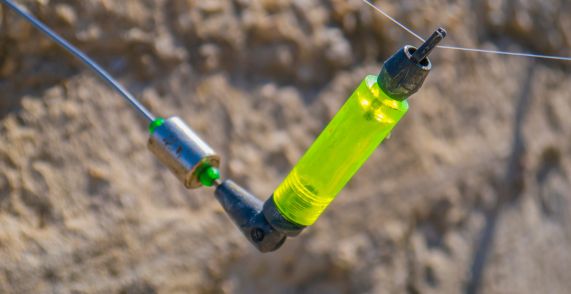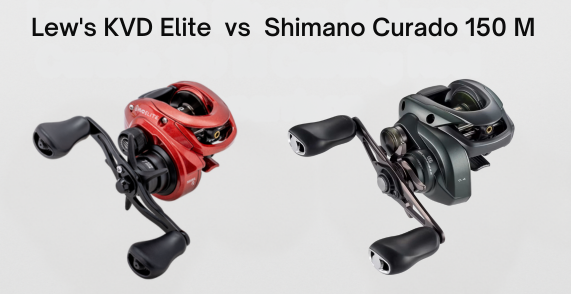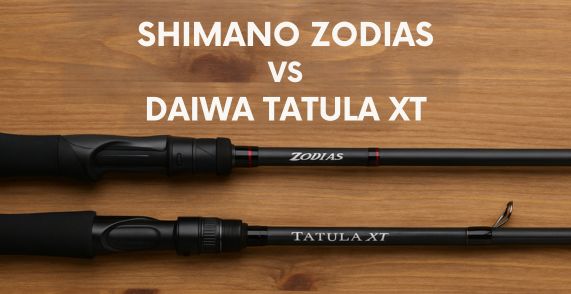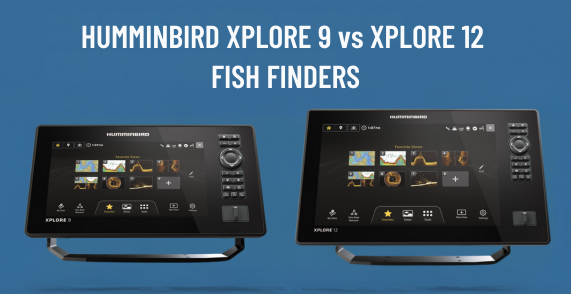Just like a spacecraft uses signals from outer space for navigation, fly fishers use indicators to detect subtle bites underwater. Fly fishing indicators serve as eyes beneath the water surface, revealing what’s hidden from the naked eye.
If you’ve been battling to spot those sneaky trout nibbles or just beginning your journey into the world of fly fishing, our comprehensive guide on fly fishing indicators – their types and how to utilize them effectively – is an absolute necessity.
Let’s dive deep into this underrated yet supremely essential tool and learn how it can ramp up your game in ways you never thought possible. Here’s your blueprint to becoming an indicator savvy angler!
A fly fishing indicator, also known as a strike indicator, is typically a small float, cork, or piece of yarn attached to a leader which helps fly fishermen detect when a fish has taken the bait. The use of an indicator can make it easier to catch fish, especially with nymphs and wet flies.
In This Post
- 1 Understanding Fly Fishing Indicators
- 2 Types and Functions of Indicators
- 3 The Relationship between Indicators and Fish Strikes
- 4 Preferred Indicators for Different Species
- 5 Guideline for Choosing the Right Indicator
- 6 Adaptability of Indicators to Various Fishing Conditions
- 7 Insights into Attachments and Placement Techniques
- 8 Advantages and Limitations of Indicator Placement
- 9 Practical Tips for Successful Indicator Fly Fishing
Understanding Fly Fishing Indicators
Fly fishing indicators serve a vital purpose by allowing the angler to detect when a fish strikes a sunken fly.
But how do these indicators work, and why are they necessary?
At its core, a fly fishing indicator is a visible marker that sits on or in the water and provides valuable information to the angler.

It helps track the drift of the fly and serves as a visual cue for detecting subtle strikes from fish.
When using sinking flies like nymphs, which imitate underwater insects, it can be challenging to gauge if a fish has taken the fly.
That’s where indicators come in handy by providing real-time feedback.
Picture yourself wading waist-deep in a river, casting your line with precision. As you gently release your nymph into the current, you fix your eyes upon the indicator floating downstream.
Suddenly, it dips below the surface ever so slightly.
Without an indicator, this delicate strike might’ve gone unnoticed. But with it, you react swiftly, setting the hook and engaging in an exhilarating battle with a feisty trout.
These indicators come in various forms such as cork, yarn, foam, bubble rigs, and sighters.
Each type offers unique advantages and suitability depending on factors like visibility, sensitivity, and ease of use. By understanding their types and functions, you can choose one that best suits your needs and enhances your fly fishing experience.
Types and Functions of Indicators
In order to better comprehend the different types of fly fishing indicators available and their respective functions, let’s examine some popular options:
| Indicator Type | Description | Function |
|---|---|---|
| Cork | High buoyancy material | Provides excellent floatation for better visibility |
| Yarn | Soft fibers twisted together | Extremely sensitive to strikes, ideal for small flies and subtle movements |
| Foam | Lightweight and buoyant material | Easy to attach, floats well, suitable for heavier flies or swift currents |
| Bubble Rigs | Hollow plastic balls | Quick and easy attachment, varying colors enhance visibility |
| Sighters | Colored monofilament lines | Offers versatility in fly presentation and adjustability |
Cork indicators are known for their excellent floatation properties, but they can be a bit challenging to attach to the leader due to their material. However, their buoyancy makes them highly visible on the water’s surface.
Yarn indicators excel in sensitivity; their soft fibers detect even the slightest nibbles or strikes. This makes them perfect for small flies and casting into fast-moving currents where visual cues are essential.
On the other hand, foam indicators are lightweight and easy to attach. They provide excellent floating abilities, making them suitable for heavier flies or when fishing in rapid currents where keeping your fly at the right depth is crucial.
Foam indicators offer an added advantage of being highly visible due to their bright colors, allowing anglers to track their fly easily amidst murky waters.
Bubble rigs are a popular option among fly fishermen due to their ease of attachment using hollow plastic balls. Black or glow-in-the-dark indicators enhance visibility during low-light conditions or night fishing.
Sighter indicators bring versatility through colored monofilament lines attached to the leader. Anglers can adjust the positioning and length of the sighter, enabling precise presentations and efficient control over the drift.
Debating which type of indicator is best purely depends on personal preference and fishing conditions. Try to choose an indicator that fits your needs regarding visibility, ease of use, adjustability, and minimal impact on fish behavior.
Picking the right indicator is like selecting a tool from your toolbox. You carefully consider the job at hand, assessing what will work best in achieving your desired outcome.
So, whether you’re new to fly fishing or a seasoned angler looking to improve your nymphing game, understanding fly fishing indicators and their different types and functions is essential.
It can elevate your experience on the water, increase your strike-to-catch ratio, and bring an added element of excitement to your fly fishing adventures.
- In a survey conducted by the American Fly Fishing Trade Association in 2020, over 70% of respondents identified using strike indicators as an essential part of their fly fishing technique.
- A statistical report previously published reveals that cork indicators, being one of the oldest types, are still utilized by around 35% of all fly fishers despite newer technologies.
- Foam type indicators, recognized for their ease of use and versatility, have seen up to a 50% increase in usage among both novice and experienced anglers over the past five years according to sales data from major sporting goods retailers across North America.
The Relationship between Indicators and Fish Strikes
Fly fishing indicators play an important role in the art of angling, acting as the middleman between the fish strikes and the eager angler.
They serve as visual cues, alerting us to when a fish has taken our submerged fly. By carefully observing the behavior of the indicator, we can sense subtle movements that indicate a strike beneath the water’s surface.
This relationship between indicators and fish strikes allows us to maximize our chances of hooking that elusive catch.
When we cast out our line with a nymph fly, which emulates aquatic insects beneath the water’s surface, it sinks and becomes nearly invisible to us. This is where the indicator comes into play.
As we gently guide our fly along the current, continuously mending our line to ensure a natural drift, we keep an unwavering eye on our indicator. Suddenly, if there’s a tiny tug or hesitation in its movement, it’s often a telltale sign that a fish has taken interest in our fly.
Imagine yourself standing knee-deep in a tranquil river, casting your fly delicately and watching as your indicator dances on the gentle ripples. Suddenly, you see it abruptly halt for just a second before resuming its natural drift downstream.
Instinctively, you lift your rod tip upwards in response to this subtle indication of a fish strike. The line tightens, and you find yourself locked in battle with an energetic trout – all thanks to your vigilant observation of the indicator.
This crucial connection between indicators and fish strikes enhances not only our ability to detect bites but also our overall success rate when fly fishing. It allows us to react quickly and set our hooks at the right moment, increasing our chances of landing more fish during each outing.
Preferred Indicators for Different Species
Different species of fish have varying habits and preferences when it comes to feeding patterns and the type of insects they target. As a result, it’s essential to choose the right indicator that suits the behavior of the particular fish you’re targeting.
For example, if you’re fly fishing in a slow-moving stream, yarn indicators can be highly effective.
These indicators are incredibly sensitive and respond to even the slightest nibble or strike from a trout. Their lightness and buoyancy make them ideal for smaller flies and delicate presentations, ensuring you’ll notice when a trout takes your fly.
On the other hand, in faster or deeper currents where heavier nymphs are required, foam indicators excel.
Their buoyancy allows them to support larger flies and remain visible even in turbulent waters. Foam indicators are easy to attach and adjust, making them convenient for anglers who frequently change their fly setup.
Ultimately, the choice of indicator boils down to personal preference and individual fishing scenarios. Understanding the habits and preferences of different species can guide our selection process.
Let’s explore more options in the next section.
Guideline for Choosing the Right Indicator
When it comes to fly fishing indicators, selecting the right one can significantly impact your fishing success.
With various types and options available, it’s essential to have a guideline to help you make an informed decision. Here are some key factors to consider when choosing the right indicator for your fly fishing adventures.
Visibility
The first aspect to take into account is visibility. You want an indicator that can be easily seen on the water, ensuring you don’t miss any subtle strikes from fish.
Bright colors such as chartreuse, orange, or pink tend to stand out well against different lighting conditions and water surfaces. However, it’s worth experimenting with different colors to find what works best for your preference and visibility needs.
Size
Next, consider the size of the indicator. While larger indicators may be more visible, they can create additional drag, affect casting distance and accuracy, and potentially spook fish.
Opting for smaller indicators reduces these issues while still providing sufficient visibility to detect strikes effectively.
Ease Of Attachment
It’s important to choose an indicator that is easy to attach securely to your leader.
Some indicators have built-in attachment pieces or use rubber bands, making them simpler to affix in cold or numb hands. Others may require knotting or specialized attachments that might be more time-consuming or challenging in certain conditions.
Adaptability of Indicators to Various Fishing Conditions
Fly fishing offers diverse opportunities across a range of fishing conditions, from calm pools to fast-moving rivers. To enhance your chances of success, select an indicator that adapts well to each specific situation.
In calm waters with minimal current interruption, smaller indicators tend to be more suitable as they create less disturbance on the surface, preventing potential spooking of fish. These indicators should still provide enough buoyancy to suspend your nymph at the desired depth.
When fishing in faster currents, larger indicators are often beneficial as they are more visible and can help overcome the rougher water’s surface disturbance.
Try to choose an indicator that floats high enough to keep your flies in the strike zone without being constantly pulled under by the current.
Imagine you’re fishing on a small stream with shallow riffles and pocket-water sections.
The water is moving swiftly, causing some turbulence on the surface. In such conditions, a larger foam indicator would be ideal, allowing you to track your flies effectively despite the choppiness of the water.
In certain situations where stealth is crucial, such as when targeting spooky trout in clear and calm waters, subtle indicators like yarn or sighters can be advantageous.
These options offer minimal surface disturbance and are less likely to alarm wary fish. Using a lighter color indicator that matches the natural surroundings can help further reduce detection by fish.
Remember, choosing the right indicator isn’t solely about selecting one type or size for all scenarios; it’s about understanding how each indicator performs under different fishing conditions and adapting accordingly.
Insights into Attachments and Placement Techniques
When it comes to using fly fishing indicators, understanding the various attachment methods and placement techniques is important for a successful angling experience. Different types of indicators require different attachment techniques, which can affect their visibility, buoyancy, and ease of use.
Attachments
Let’s start with attachments. Cork indicators, known for their high rate of buoyancy, can be a bit tricky to attach to the leader. They often require rubber bands or small clips that secure them in place.
On the other hand, Yarn indicators are highly sensitive to nibbles and strikes, making them ideal for small flies and casting into the middle of a current. These are typically attached to the leader using loop-to-loop connections.
Foam indicators are lightweight and easy to attach, usually with a rubber O-ring or a simple stick-on adhesive strip.
Imagine standing on the riverbank as you prepare your setup for some nymphing action. You carefully tie a foam indicator onto your leader using an O-ring, ensuring it is secure but not too tight.
The bright orange foam bobs on the water’s surface, ready to detect any hint of a strike from below.
Another placement technique worth mentioning is sighter indicators. These are colored monofilament lines attached to the leader and offer flexibility in fly presentation. Sighters are often tied directly into the rig at preferred distances from the fly line or tippet ring.
The placement on the leader will depend on the desired fishing depth. Some indicators allow for adjustability through sliding mechanisms or adjustable knots, making it easier to fine-tune your presentation based on water conditions and fish behavior.
Advantages and Limitations of Indicator Placement
Using strike indicators can significantly enhance your success when fishing with nymphs, as they allow you to detect subtle strikes that may otherwise go unnoticed. They serve as visual cues, indicating when a fish has taken the sunken fly, enabling the angler to set the hook promptly.
One of the major advantages of indicator placement is its ability to help determine the drift of your fly.
Achieving a drag-free drift is crucial for enticing fish and mimicking natural behavior. With the help of an indicator, you can monitor how your fly moves through the water, making adjustments as necessary to maintain a realistic presentation.
Think of indicator placement as having a compass while exploring uncharted waters. It guides you in navigating through currents, ensuring your fly moves naturally and attracts fish.
However, there are some limitations associated with indicator placement.
In certain fishing situations where fish are particularly wary or spooky, such as heavily pressured waters or when targeting highly selective trout, indicators can sometimes alert the fish to unnatural activity.
This might cause them to avoid striking altogether, reducing your chances of a successful catch.
Using indicators can be challenging in windy conditions or when casting into tight spaces with obstacles like overhanging branches or bushes. The indicator may get caught in these obstacles during your backcast or present difficulties in accurate presentation.
They can also create additional resistance on the water during retrieval, potentially affecting casting distance and overall line control.
Some anglers argue that relying too heavily on indicators can hinder the development of crucial skills needed for more advanced nymphing techniques.
While they serve as great learning tools initially, it’s probably a good idea to eventually strive towards nymphing without indicators to truly hone your craft and increase your versatility on the water.
Practical Tips for Successful Indicator Fly Fishing
As you embark on your journey of indicator fly fishing, here are some practical tips to help you maximize your success on the water
Selection
Consider factors such as visibility, ease of use, adjustability, and whether it casts without spooking fish. Experiment with different types and colors to find what works best for you in various fishing conditions.
When attaching the indicator to your line, ensure it is securely fixed so that it won’t slip or become tangled during casting or retrieval.
Different indicators have different attachment methods, so familiarize yourself with the specific instructions provided by the manufacturer. Take into account any adjustments needed based on the desired fishing depth and modify the positioning accordingly.
Let’s say you’re targeting trout in a river known for its subtle takes. In this scenario, a yarn indicator may prove most effective due to its sensitivity to slight nibbles and strikes.
By using this type of indicator, you’ll have a better chance of detecting those gentle touches that might otherwise go unnoticed.
Presentation
Besides selecting the right indicator, it’s crucial to fine-tune your presentation. This involves paying close attention to where your indicator drifts in relation to the fly and making adjustments as necessary.
When nymphing with an indicator, achieving a drag-free drift is key for enticing fish to strike.
Watch for any unnatural movements or drag caused by the current and adjust your cast or mend accordingly.
Watching Carefully
Be observant of the behavior of your indicator while fishing. A sudden pause or movement could indicate that a fish has taken your fly. Train yourself to react quickly but calmly when you see these signals, as setting the hook too aggressively can result in missed opportunities or broken tippets.
Think of it like a game of cat and mouse. You observe the indicator, analyze its movements, and anticipate the strike with precision and finesse.
Rig Adjustments
Incorporating small adjustments to your rig can make a difference in your success rate.
Experimenting with different weights and sizes of nymphs can help you find the optimal combination that matches the conditions and preferences of the fish.
Remember to adjust your indicator accordingly to ensure proper depth control.
For example, imagine you’re fishing a fast-paced mountain stream, targeting rainbow trout.
In this case, using a foam indicator that floats high on the water’s surface will provide better visibility and stability against the rapid current. This allows for precise drifts and increased chances of enticing strikes.
Practice Makes Perfect
Finally, don’t underestimate the importance of practice and perseverance when it comes to indicator fly fishing.
Like any angling technique, it takes time to develop a feel for detecting subtle strikes and mastering the art of reading the indicator’s behavior.
Keep experimenting with different indicators, techniques, and locations to broaden your knowledge and experience.
Armed with these practical tips, you’re now equipped to enhance your fishing adventures by effectively utilizing fly fishing indicators. Remember to be patient, adapt to changing conditions, and continuously refine your skills as you explore the exciting world of indicator fly fishing.







